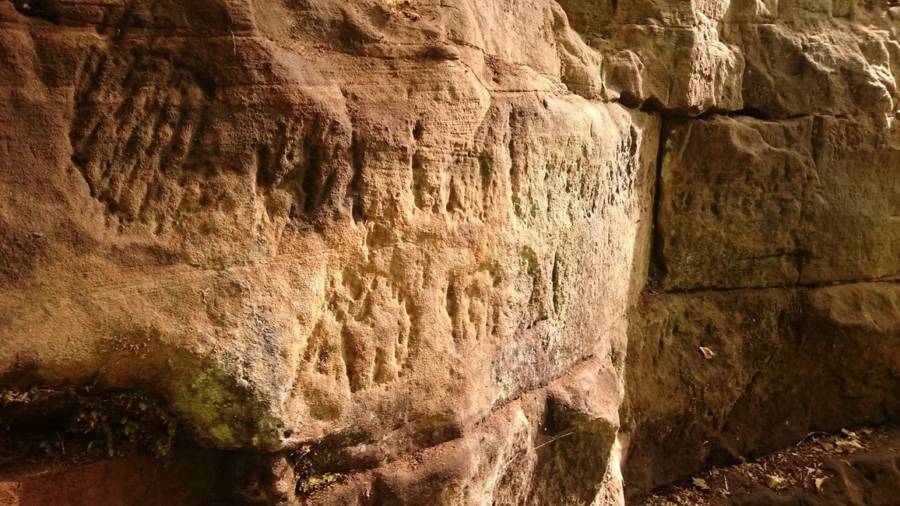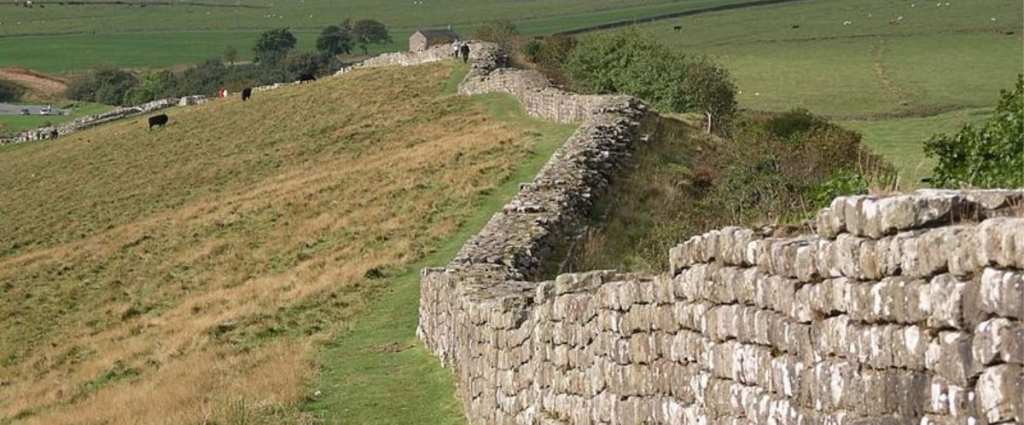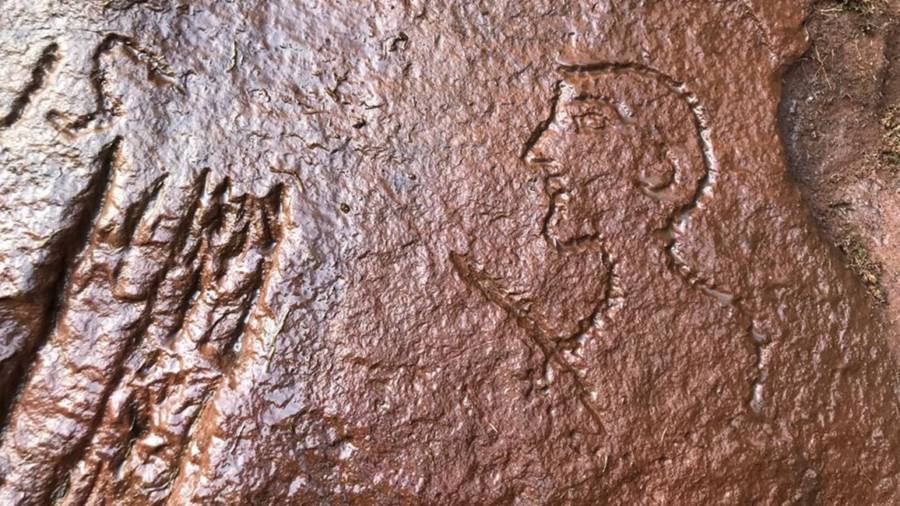There’s a section of Hadrian’s Wall – built thousands of years ago across Britain to help the Romans keep the “barbarians” out of their territories – known as “The Written Rock of Gelt.”Researcher from Newcastle University and Historic England have been examining the wall’s markings – but they’ve only been able to access them by descending into a 30-foot quarry in Cumbria. Lucky they made the effort, though, because they have been richly rewarded for their efforts.
Some of the carvings date to around 207 C.E., when Hadrian’s Wall underwent extensive repairs – meaning that loyal soldiers spent their valuable time lugging sandstone to patch up crumbling sections. They got bored, just like we do now, and the resulting carvings include one recognizable as a human penis.
1,800-year-old Roman penis carvings discovered near Hadrian’s Wall — some things never change
byu/shane2194x ininterestingasfuck
The phallus was used as a symbol of good luck by Romans in that period, and the other markings also provide insight into the historical mindset of the time – including a caricature of an officer-in-charge. Mike Collins, Inspector of Ancient Monuments for Hadrian’s Wall at Historic England, isn’t underplaying the finds.
“These inscriptions at Gelt Forest are probably the most important on the Hadrian’s Wall frontier. They provide insight into the organization of the vast construction project that Hadrian’s Wall was, as well as some very human and personal touches, such as the caricatures of their commanding offer inscribed by one group of soldiers.”
Image Credit: Newcastle University
The site was shut down for a while in the 1980s after part of the path collapsed into a gorge, and since then, the wall has eroded a great deal. Recording the carvings is now more vital than ever, and modern technology has made it increasingly simple. Ian Hayes, professor of archaeology, explains.
“These inscriptions are very vulnerable to further gradual decay. There is a great opportunity to record them as they are in 2019, using the best modern technology to safeguard the ability to study them into the future.”

Image Credit: Newcastle University
The team is using laser scanning technology to record the inscriptions in as much detail as possible, then processing the digital images into three-dimensional models for study and public viewing.
So go, Englanders and people who travel. Check out the 1800-year-old penis and marvel at the connection you’ll be forced to feel to the past.
I saved it until the end, but let’s just say it: LOL.







